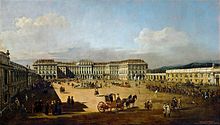But when I'm not being a proud, ecstatic Jewish mother of the groom and a kvelling recent grandma (there's a complicated contemporary story here, of course), I'm happy and proud to be called a "master (or mistress) of the powerfully erotic sex scene." Thanks, Leslie, and thanks too, since I missed the discussion, for giving me the topic for this post, which is a more extensive take on how I do it.

First and foremost by spending an inordinate amount of time and effort on it. Not so much searching for the right words for particular acts or body parts (though that's tricky, particularly in a historical setting), but much more often doing something like looking for the right two-syllable word for "put" or "grasp," or even "touch," let's say, as the rhythm of the sentence, the paragraph, the scene requires.
Because isn't what that's about? Somehow figuring a way to communicate, through those little black marks on the page, the strange experience of being beyond language, or perhaps of being close to the root of expression and communication? Somehow extracting a sense of all that, through a series of sounds and meanings -- and even pauses for breath -- in the reader's mind.
Somehow it's about the amazing business of expressing the shifting of characters' point of view through time and space -- and no, I don't worry about head-hopping in a sex scene, hell, for me that's the point: how to make clear verbal sense of what goes on as a lover perceives what she's feeling and what he's feeling at the same time -- what she knows when, what she wants to make happen next or perhaps is moved to do right now -- and what, sometimes, finally, she's just too far-gone and grateful and greedy to care about. So the reader can't ever forget there are two separate beings here being less separate than any other experience allows.
It's all about the contending and coalescing of separate selves -- take one set of perceptions and don't just double it, square it. And don't forget to vary your writerly focal length as you move through time, to help the reader follow the dance of many steps and possibly, if you're lucky (and my characters often are), a step you've never tried before, from as many points of view as it takes. You want it as devilishly, angelically surprising and multifaceted as sometimes it can be in life -- and yet in a clear sequence that the reader can take in (and at best, be in two skins besides her own).
To imagine, to feel, the complexity of human interaction and to make it verbally explicable. When you say it that way you realize that it's just writing, and that it takes everything that good writing takes. Which is to say it's hard.
But it's not hard in the way that I often hear romance authors talking about, as though they've done all that sacrificial labor in a kind of nunnish obeisance to The Story and at great cost to themselves. Oh, come on.
As my brilliant friend Susie Bright puts it in her highly recommended How to Write a Dirty Story, "a good sex scene is one that arouses its author." Which is maybe not exactly ladylike or professional to admit -- and which might bother some people to hear, that somebody actually got hot writing what you got hot reading. But I think it's how it works.
Leaving for the last the best, which kept me going for years before my erotic writer alter ego Molly Weatherfield or even Pam Rosenthal got published -- that erotic writing is, and should be, its own reward.
I'm curious, admit it, erotic writers out there -- is it good for you?















